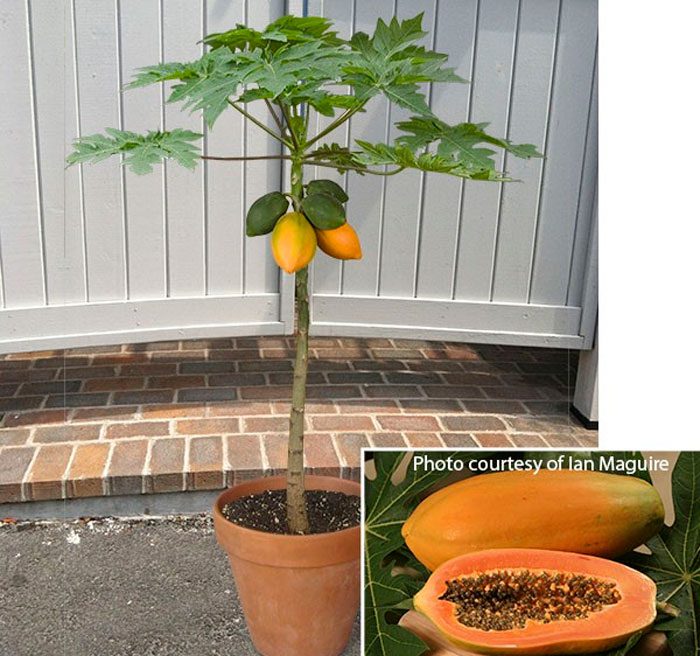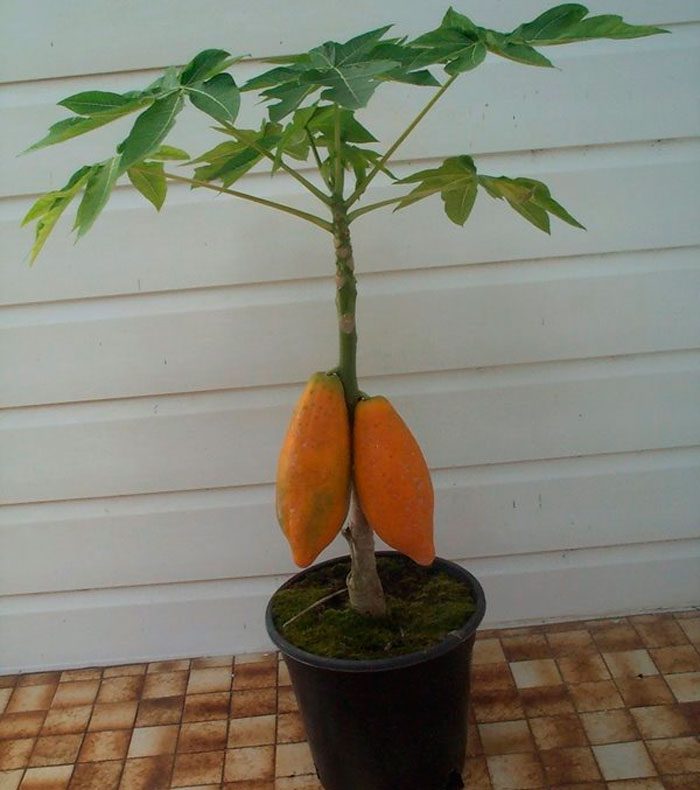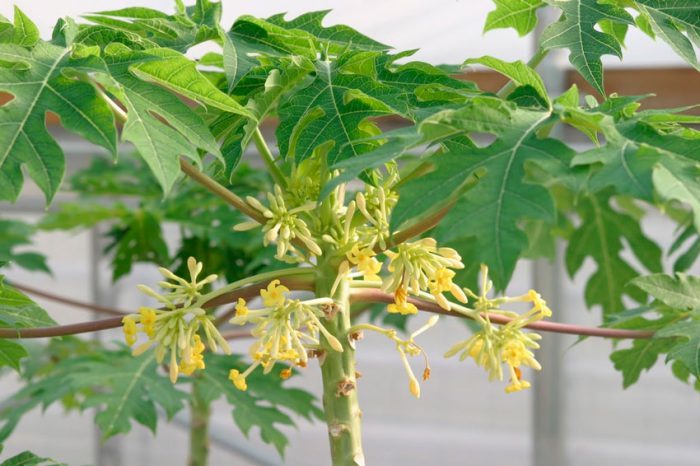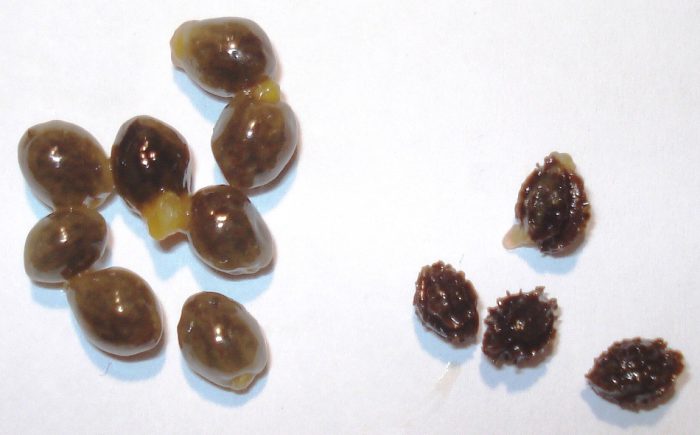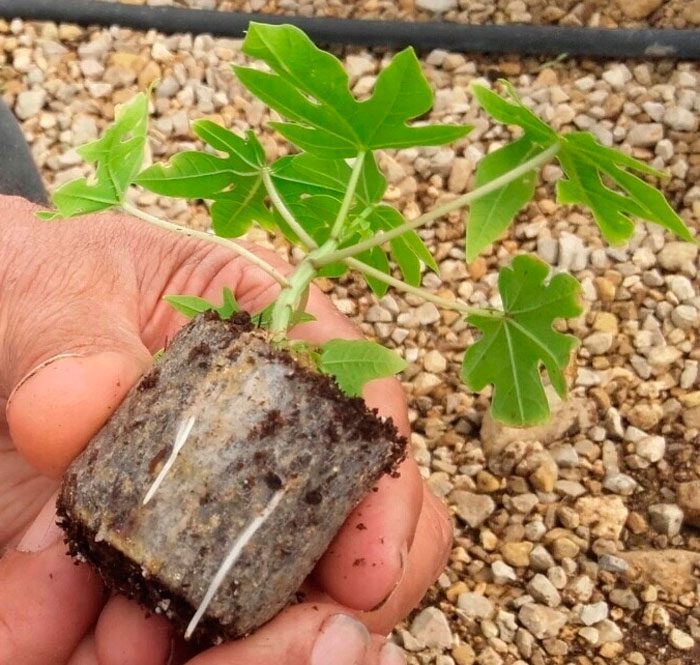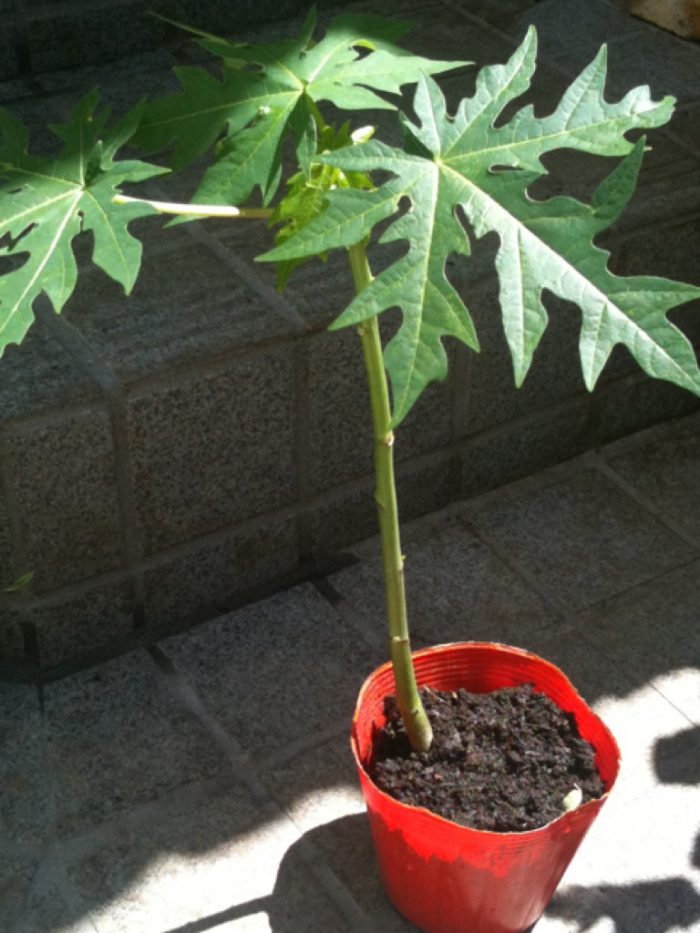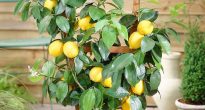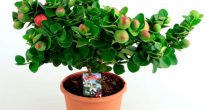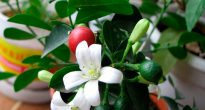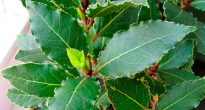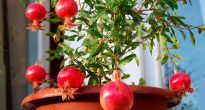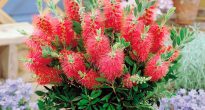The birthplace of such a bread or melon tree as papaya (Carica papaya) is South America. However, this plant is not a relative of melons or other vegetable crops. It is considered a separate crop that bears fruit with a unique melon and strawberry flavor.
Such a plant is not a tree or a palm tree. And this is a herbaceous perennial plant, while its stem is similar to a bamboo (it is hollow inside). Papaya is a fast growing plant (both in nature and in the apartment). Its stem is capable of reaching 3-5 and more meters in just 1 or 2 years. Fruiting begins in the second year. When grown indoors, papaya needs pruning, which will restrain its growth, while the bush has a large number of side shoots.
In order to restrain the growth of the plant, it is recommended to choose a container of not very large volume for planting it. For example, in a five-liter container, its growth will be about 200 centimeters. When grown this way, papaya will also bear fruit. However, the harvest will not be as abundant. But if such a plant is planted in open ground in the warm season or transplanted into a large container, then it will begin to actively grow again.
Many believe that this plant, when grown indoors, lives for only 5 to 6 years. But this is not the case. If you take care of it properly and create the necessary favorable conditions, then it will be able to live up to 20 years and even more.
Content
Caring for papaya at home
Temperature regime
The birthplace of papaya is the tropical region of South Africa. However, with the help of humans, it has spread to almost all continents. It is important to remember that such a herbaceous plant reacts extremely negatively to temperatures below 0 degrees. If the temperature does not drop below this value throughout the year, then the papaya develops superbly and grows very quickly, while giving an incredibly bountiful harvest. Large fruits reach 40 centimeters in length.
However, growing this plant indoors or in a greenhouse, it is impossible to achieve such abundant fruiting. And the taste of the fruit will be slightly different. So, indoor papaya is able to please its owner with 2 or 3 fruits, the length of which will vary from 20 to 25 centimeters.
Papaya reacts extremely negatively to low air temperatures. So, just at minus 1 degrees, the roots and stem with leaves die.So, in winter, when grown indoors or in a greenhouse, experts recommend maintaining a temperature of at least 14-16 degrees. However, the plant feels best at 25-28 degrees. But it is worth considering that papaya can also die from extreme heat (over 30 degrees).
How to water
In this plant, the roots are close to the soil surface, therefore, in the warm season, it needs abundant watering. With the onset of October or November, watering must be significantly reduced, since in the cool, the work of the root system deteriorates, which can lead to stagnation of liquid in the substrate, which will entail the development of root rot. There are experts who believe that papaya is a succulent plant. The fact is that when the air temperature drops, it can calmly endure the not very long drying of the earthen coma. However, the bay at this time is destructive for her.
It happens that being in cool conditions, papaya sheds all its leaves. In this case, watering and feeding should be completely stopped and allowed to rest.
Airing
The plant needs regular ventilation, but in winter this must be done very carefully, as cold air can destroy it. When the leaves come into contact with cold air currents, a burn forms on them. In this case, they fade very quickly or lose their turgor. In this regard, this plant may be warm or cool, but in no case should cold air currents fall on it.
Top dressing
Since this culture is characterized by very rapid growth, it simply needs to be fed often and this should be done in spring and summer. At the same time, fertilizing the soil in the autumn-winter period is strictly prohibited. So, they begin to feed the plant in March and do it 2 times a month. For feeding, you can take any complex fertilizer. In this case, both dry and liquid fertilizers are suitable. It is recommended to feed the papaya leaf-by-leaf (foliar method).
Flowering features
Such a plant is dioecious. However, thanks to breeders, bisexual varieties were born. So, on these plants, both male and female flowers grow at the same time, and they are called self-fertile. In the case when indoor papaya blooms, but does not bear fruit, this may mean that you have either a female or a male specimen. At the moment, self-fertile varieties are very popular, which can be freely purchased in a specialized store. From a dioecious specimen growing indoors or in a greenhouse, it is rather difficult to achieve fruiting. This will require 2 plants: female and male. It will also be necessary for them to start flowering at the same time, only then it will be possible to produce pollination.
Papaya bears fruit in summer and autumn. It should be remembered that unripe fruits can be severely poisoned, because they contain milky juice. During the ripening of the fruit, the milky juice loses its toxic properties and becomes watery.
Reproduction methods
You can propagate by seedscollected from ripe fruits. Their size is similar to that of tomato seeds. In order for your seeds to germinate successfully, remember that they need a fairly high temperature of 25 to 28 degrees, which must be maintained constantly. Sowing is carried out in loose soil that allows water and air to pass through well, while they need to be buried only half a centimeter. You can also take sphagnum for sowing.
It is worth remembering that the cooler it is in the room, the longer the seedlings will appear. If they are placed in a warm place (25-28 degrees), then the first shoots should appear after 8 days. It is also worth remembering that good seed germination can persist for a very long time (over several years). To store them, use any glass container and place it in a cool place.
Also, this plant can be propagated by cuttings... With this method, all the properties characteristic of the mother plant are preserved. The length of the cutting should be 10 to 12 centimeters. And their diameter should be no more than one and a half centimeters. In this case, the cut should be made at an angle of 45 degrees. Using a pruner or a very sharp knife, you need to remove all the lower leaf plates, and only 2 should remain at the very top. Then the cutting is left for 2-3 days (preferably a week) for drying, while a tissue plug should appear at the cut site, which can prevent a variety of pathogenic microbes from penetrating into the stem. Before planting in the soil, the cut should be treated with chopped charcoal. Also, if desired, you can use an agent that stimulates the growth of roots, and only then rooting.
The cutting is planted at a depth of 2-3 centimeters, then the soil is slightly compacted and watered. For this, clean water is used. The stalk should be placed in a well-lit (diffused light), warm (25-28 degrees) place, and high humidity must be maintained in it. It is recommended to cover the stalk on top with a glass jar, a plastic bag or a glass made from a plastic bottle. It is worth remembering that in unfavorable conditions, the roots of the cuttings will not appear. At the same time, you can plant the stalk in vermiculite, perlite, sand or peat, and a mixture consisting of equal shares of sand and peat is also suitable.
A young plant is planted in a not very large pot. It should be remembered that a small plant has a small root system, which cannot cover the entire substrate in a bulky dish, as a result of which rotting will begin due to overflow. A papaya planted in a large pot can also begin to grow vegetatively with very little flowering. During the transplantation of the plant, the diameter of the new container should be only 2 or 3 centimeters larger than the previous one.
Pests and diseases
This plant is highly resistant to diseases and pests. When grown in a room with too dry air, papaya can settle spider mites... In this regard, in order to prevent and control such pests, it is required to arrange souls for the plant. You need to wash all the foliage with cool or cold water. In case of severe infection, it is necessary to carry out treatment with biological complex preparations of the appropriate action.
Various fungal diseases can also appear. So, when watering a plant during a cool wintering (less than 15 degrees) with too cold water, root rot begins to develop, which leads to the death of the entire specimen.
Cooking tricks
The fruits obtained from papaya grown with their own hands, after they ripen, can be eaten without fear. Such fruits are versatile and are suitable for eating not only fresh. So, incompletely ripe fruits are often used as vegetables. They are used for stewing and baking. It is worth remembering that only ripe fruits can be eaten raw. They are used to prepare aromatic cocktails, make fruit salads, or use them as pie filling. An interesting fact is that the juice of this fruit softens meat very well, therefore it is used as a marinade. They soften even the toughest meat, so in America it is actively used in the preparation of steaks.

